A whole brisket – the chest muscles – are comprised of 2 muscles:
- Flat
- Point
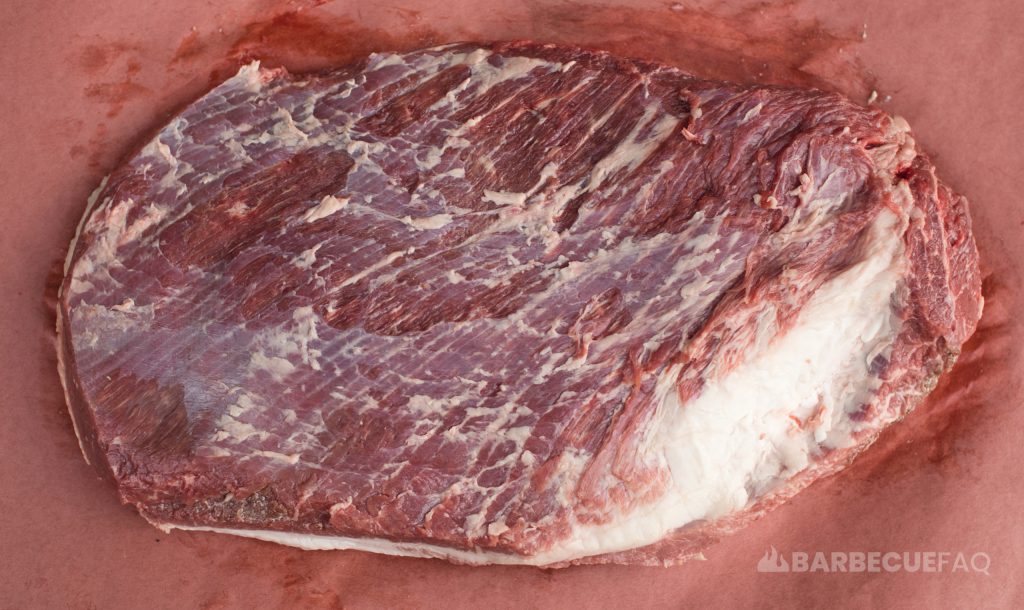
Flat, “First Cut”, “Deep Pectoral”, “Lean” or pectoralis profundi
The flat is separated from the point by a seam of intermuscular fat.
The flat makes up the majority of the brisket and typically weighs between 3 to 10 lbs.
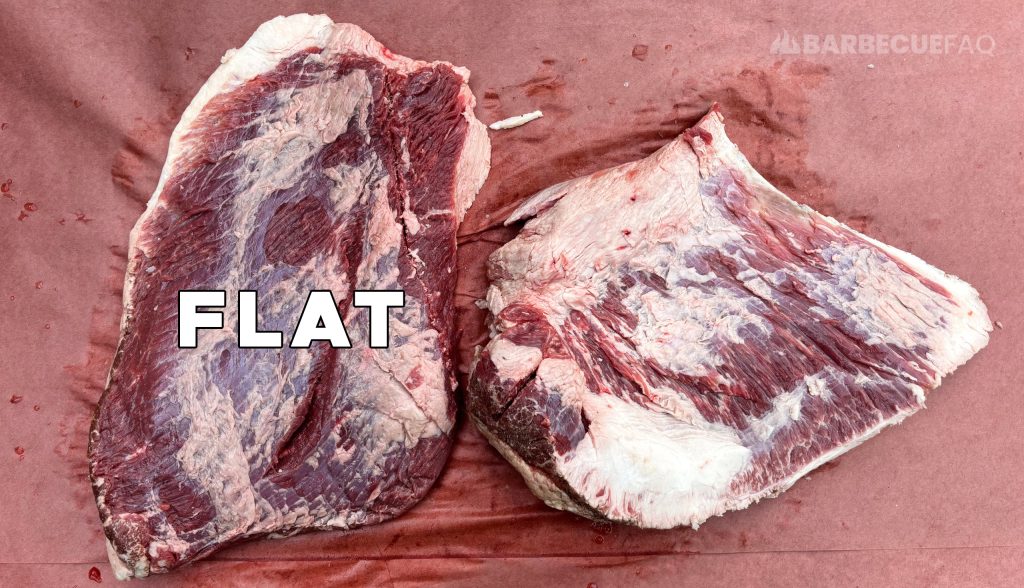
The flat is so called because it’s just that – flat.
For the same reason it’s called “lean” – because it contains less fat than the point.
At a grocery store, this cut of meat is often sold separated from the flat. People will use it to braise in the oven or cook in a slow cooker.
It’s also commonly sold pre-brined for something like corned beef.
When smoked, it tends to dry out because it lacks intramuscular fat. When picking a brisket, pay close attention to this section of the meat and look for white striations.
This is one of the only ways to ensure the meat won’t dry out.
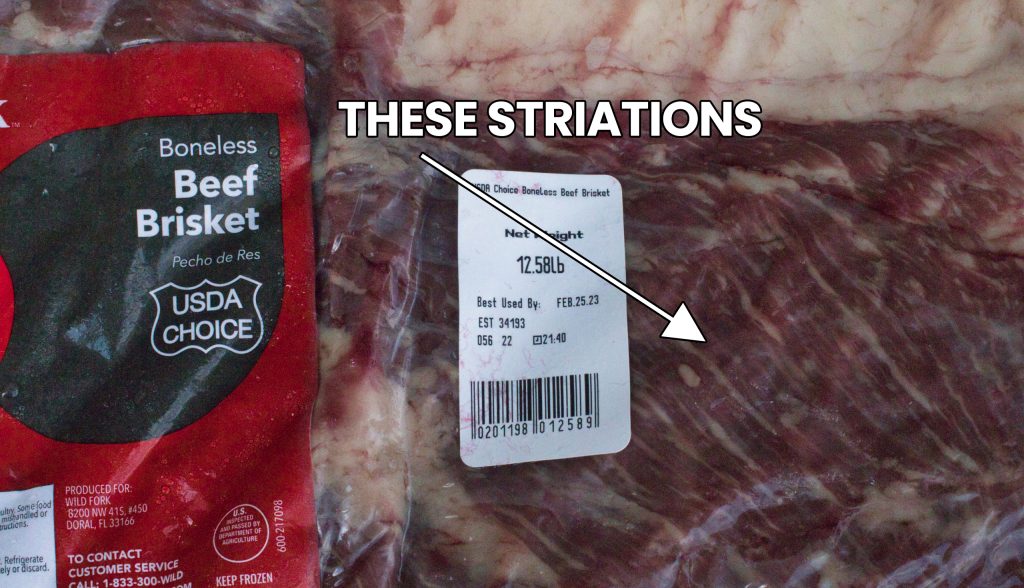
Brisket Point, “2nd Cut”, “Round”, “Fatty” or pectoralis superficialis
The point muscle has abundant marbling, fat, and connective tissue.
Unlike the flat, regardless of the USDA grade you choose (choice or prime), the point will have no issues staying moist (unless you overcook it).
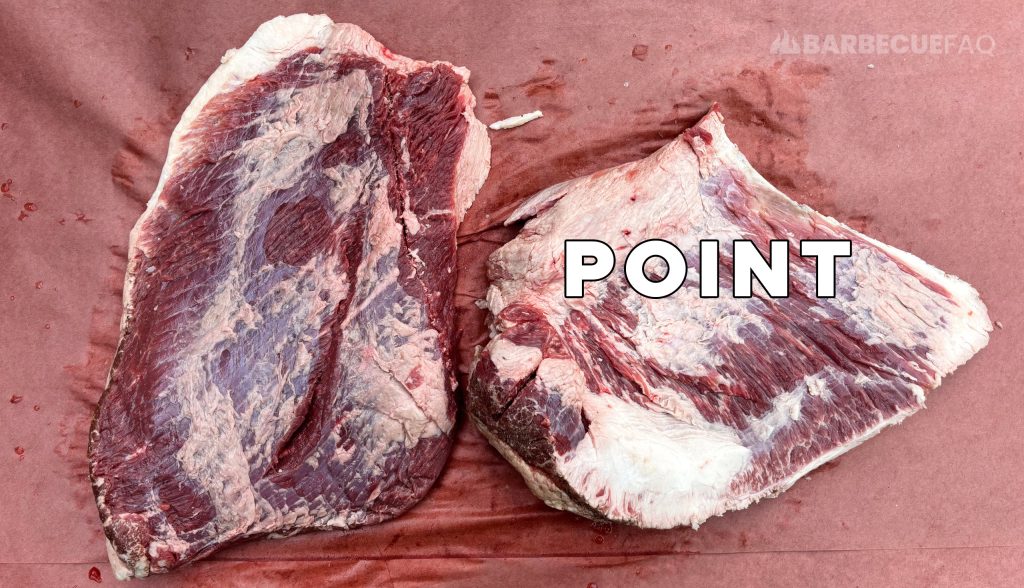
There’s Really Only 3 Differences
- Size
- Fat content
- Flavor
Noted above, brisket flat makes up the majority of the brisket.
Say a whole brisket weighed 12 lbs.
- Flat is roughly 60-70% of the meat (~7-8 lbs)
- Point is roughly 30-40% of the meat (~3-5 lbs)
Brisket point contains more marbled fat and connective tissue.
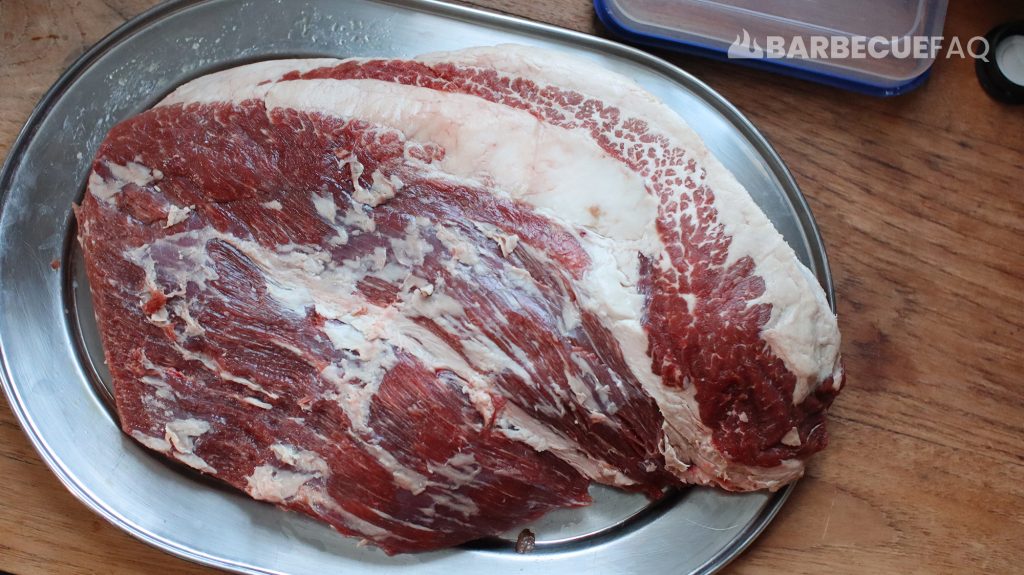
Meaning you’ll get more meat yield from the flat than the point but the meat from the point will be beefier, fattier, and richer tasting.
The saying of “fat is flavor” holds true – that’s why brisket flat tastes “better.”
But if you don’t like fatty beef, stick with the Flat or “lean.”
This is also why you leave the fat cap in-tact or trim it to 1/4-1/2″ thick. The added fat will render down and add succulence to the flat slices.
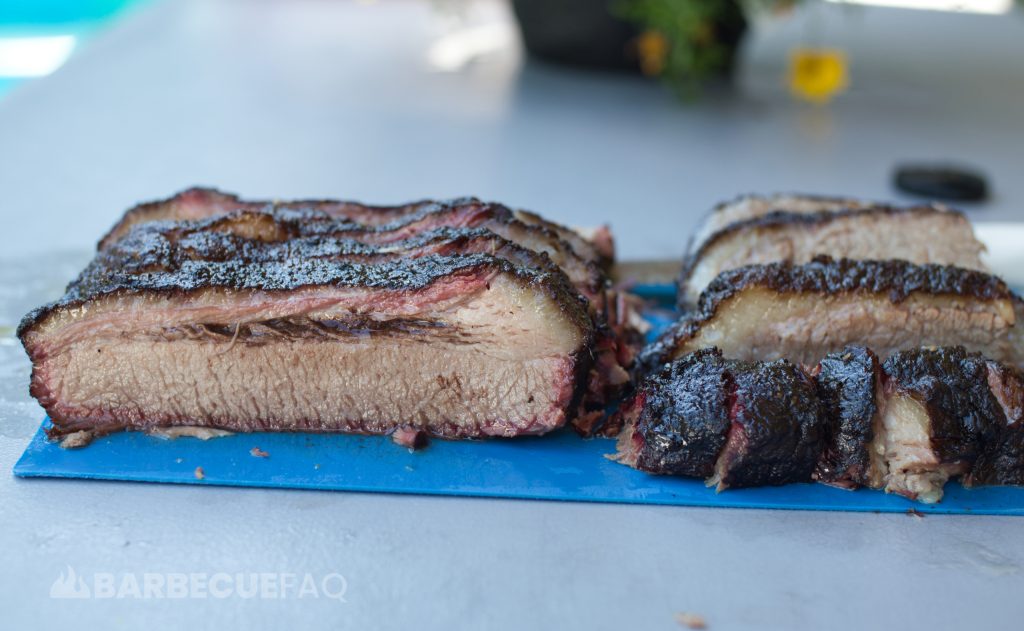
It’s Entirely Possible to Separate the Flat and the Point
All you have to do is follow the seam of fat.
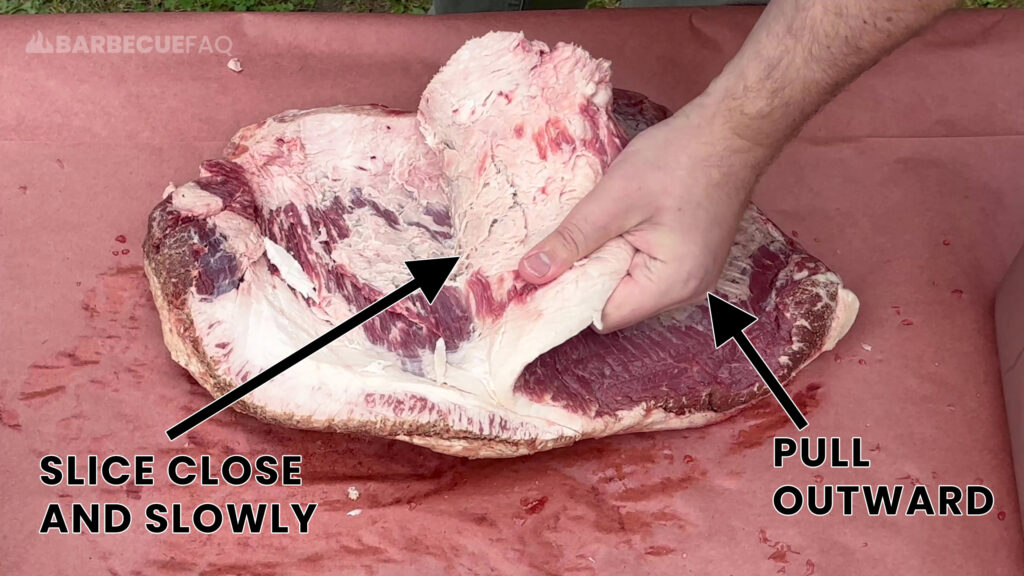
This can be done either before or in the middle of a cook.
You typically won’t find brisket point sold separately in a grocery store and you also won’t find a whole flat with the fat cap in-tact.
So doing it at home guarantees you get a fat cap and you could smoke the point whole to make burnt ends.


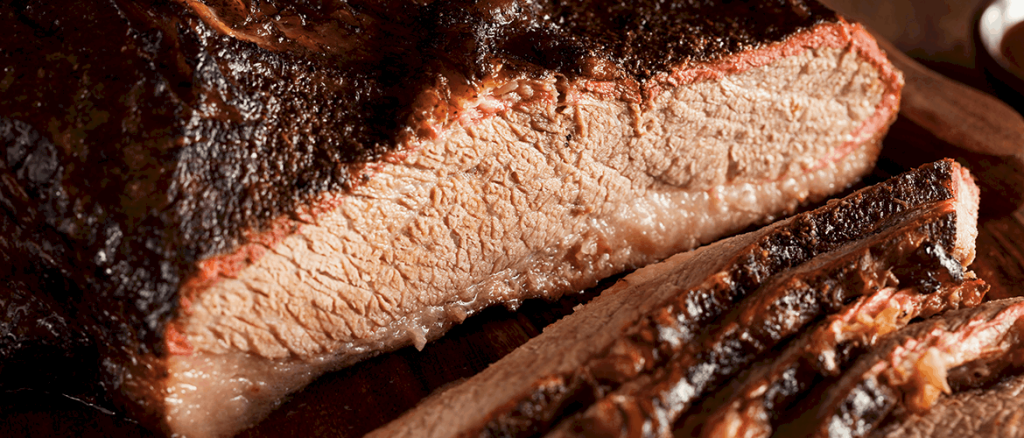

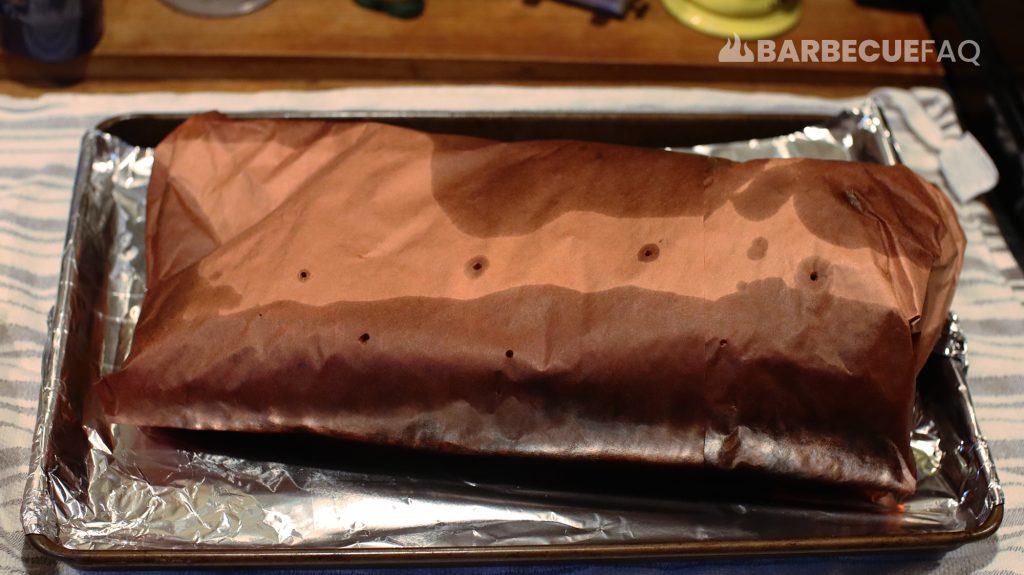
2 comments
Jenell
Thanks for the excellent information Dude.
Dylan Clay
Happy to help Jenell!